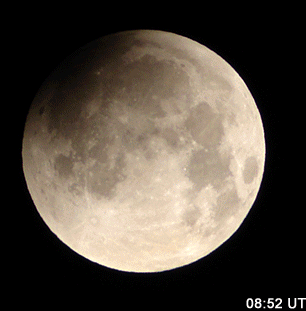

-
Mercury is the planet closest to the Sun. It is not, however, very close, since it is 36 million miles, or 58 million kilometers away from the Sun!
-
The distances of planets from each other and from the Sun are often measured in Astronomical Units, AU. One AU is the average distance between the Earth and the Sun, 93 million miles, or 150 million kilometres. Using this system of measurement, Mercury is 0.39 AU from the Sun.
-
Like all the other planets Mercury orbits round the Sun, but its orbit of the Sun lasts for only 88 days. The Earth’s orbit lasts for 365 days and Pluto’s orbit takes 249 YEARS!



-
Because Mercury goes round the Sun so quickly, the planet was called after the messenger of the Roman Gods. The messenger Mercury, or Hermes as the Greeks knew him, is usually shown as having wings on his helmet or on his sandals.
-
When Mercury orbits the Sun, it travels 36 million miles, or 58 million kilometres in the 88 days of the orbit. It moves at a speed of 48 kilometres a second, or 107,372 miles an hour!
-
Unlike the Earth and most other planets Mercury only turns very slowly on its axis, taking 59 days to complete the turn from day to night.
-
Mercury’s sunny side has a temperature rising to 400° Celsius or 750° Fahrenheit. Compare this to a warm summer’s day in London, when the temperature might be 80° Fahrenheit or 26° Celsius.
Diameter: 4,879 km
Mass: 3.30 x 10^23 kg (5.5% Earth)
Moons: None
Orbit Distance: 57,909,227 km (0.39 AU)
Orbit Period: 88 days
Surface Temperature: -173 to 427°C
First Record: 14th century BC
Recorded By: Assyrian astronomers

Mercury Diagram
Facts about Mercury
-
Mercury does not have any moons or rings.
-
Your weight on Mercury would be 38% of your weight on Earth.
-
A day on the surface of Mercury lasts 176 Earth days.
-
A year on Mercury takes 88 Earth days.
-
Mercury has a diameter of 4,879 km, making it the smallest planet.
-
It’s not known who discovered Mercury.

MORE MERCURY FACTS
-
A year on Mercury is just 88 days long.
One solar day (the time from noon to noon on the planet’s surface) on Mercury lasts the equivalent of 176 Earth days while the sidereal day (the time for 1 rotation in relation to a fixed point) lasts 59 Earth days. Mercury is nearly tidally locked to the Sun and over time this has slowed the rotation of the planet to almost match its orbit around the Sun. Mercury also has the highest orbital eccentricity of all the planets with its distance from the Sun ranging from 46 to 70 million km. -
Mercury is the smallest planet in the Solar System.
One of five planets visible with the naked eye a, Mercury is just 4,879 Kilometers across its equator, compared with 12,742 Kilometers for the Earth. -
Mercury is the second densest planet.
Even though the planet is small, Mercury is very dense. Each cubic centimetre has a density of 5.4 grams, with only the Earth having a higher density. This is largely due to Mercury being composed mainly of heavy metals and rock. -
Mercury has wrinkles.
As the iron core of the planet cooled and contracted, the surface of the planet became wrinkled. Scientist have named these wrinkles, Lobate Scarps. These Scarps can be up to a mile high and hundreds of miles long. -
Mercury has a molten core.
In recent years scientists from NASA have come to believe the solid iron core of Mercury could in fact be molten. Normally the core of smaller planets cools rapidly, but after extensive research, the results were not in line with those expected from a solid core. Scientists now believe the core to contain a lighter element such as sulphur, which would lower the melting temperature of the core material. It is estimated Mercury’s core makes up 42% of its volume, while the Earth’s core makes up 17%.